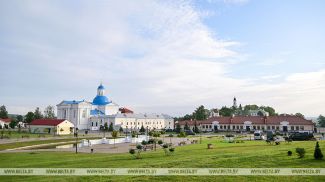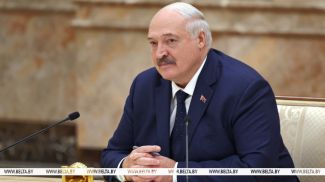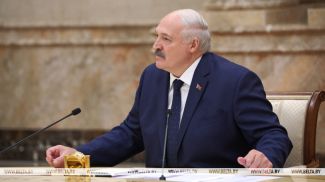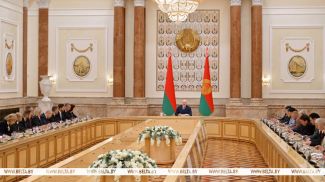
The state visit of the Belarusian president to Mongolia will reverberate throughout mass media for a long time. Not only because it was the first highest-level visit in the history of bilateral relations. The heads of state agreed to foster friendship and cooperation, to restore the once close relations that the countries enjoyed in the times of the Soviet Union and also outlined a concrete roadmap. Why Mongolia and why now? We will try to answer this question. In this episode of BelTA’s YouTube project “After the Fact: Lukashenko’s Decisions” we'll tell you how the Land of Eternal Blue Sky welcomed the Belarusian leader, what the presidents talked about one-on-one and what agreements were reached. How did Mongolia surprise Aleksandr Lukashenko and why did he give his colleague Belarusian tractors? Subscribe to our channel and stay tuned to find out more.
How did Belarus-Mongolia relations beganMinsk and Ulaanbaatar are separated by almost 7,000km. But our countries are much closer to each other than it may seem at first glance. Back in the times of the Soviet Union, Belarusians made a significant contribution to the development of Mongolia and participated in the construction of various facilities. In December 1991, Mongolia became the third country to recognize the independence and sovereignty of Belarus.
Indeed, the
president’s visit was the first one in the history of bilateral relations, but
in fact Aleksandr Lukashenko had already been to Mongolia - back in his
parliamentary years and just at the time of the establishment of diplomatic
relations between the two countries. 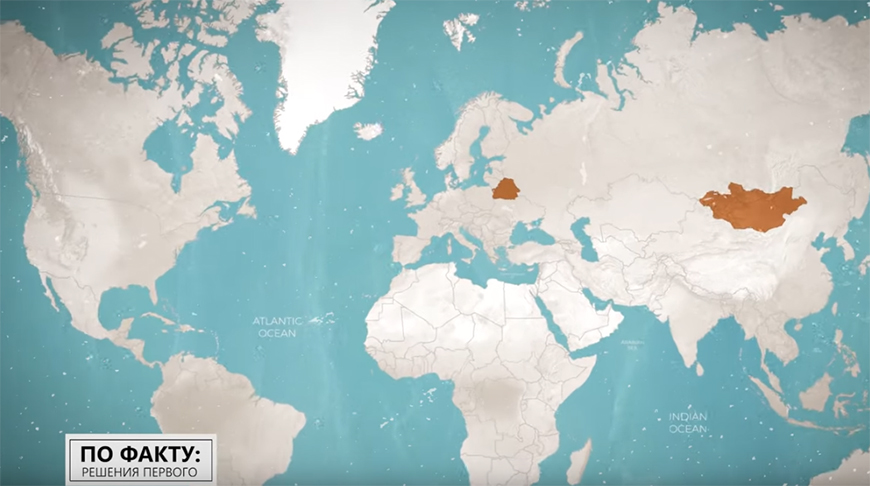 All this time,
Belarus and Mongolia tried to maintain relations at the political level.
Aleksandr Lukashenko met with his Mongolian counterparts at the summits in Ufa
and Qingdao. Economic relations were also progressively gaining momentum. But
the time has come to open a qualitatively new stage in bilateral cooperation.
All this time,
Belarus and Mongolia tried to maintain relations at the political level.
Aleksandr Lukashenko met with his Mongolian counterparts at the summits in Ufa
and Qingdao. Economic relations were also progressively gaining momentum. But
the time has come to open a qualitatively new stage in bilateral cooperation.
How was Lukashenko's visit to Mongolia prepared
Mongolia was eagerly anticipating the visit of the Belarusian head of state. President Ukhnaagiin Khurelsukh kept the preparation of the visit under his personal control, receiving weekly reports from the Foreign Ministry. In December of last year, on the sidelines of the climate summit in Dubai, he reminded Aleksandr Lukashenko of his invitation to visit the country.
In March, Minister of Foreign Affairs Sergei Aleinik visited Ulaanbaatar together with a representative delegation. During a meeting with the Mongolian leader, he conveyed him a message from Aleksandr Lukashenko, in which the president reaffirmed his readiness to visit Mongolia and expressed hope for the substantive content of his visit.
The Belarusian minister
of foreign affairs visited several ministries and enterprises, talked with
representatives of government agencies and the business community. As it turned
out, Mongolia is following the news from Belarus. 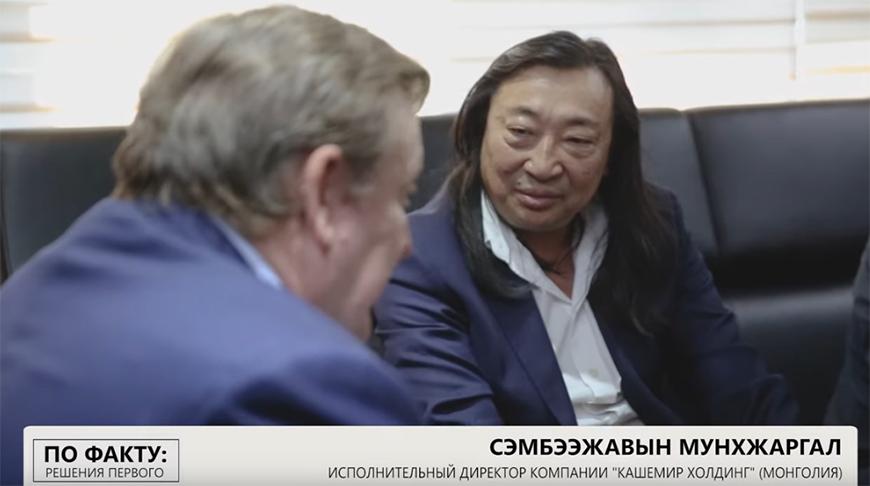 "I studied in
Leningrad. There were a lot of Belarusians there. At that time, I learned about
the tragic history of Khatyn, got to know songs by the wonderful group Pesnyary. Since then, I have
followed news from Belarus. If I understand correctly, Belarusian President
Aleksandr Lukashenko once worked in agriculture. I think he is very grounded
and down to earth,” Execute Director of Cashmere Holding Sembeejev Munkhjargal said.
"I studied in
Leningrad. There were a lot of Belarusians there. At that time, I learned about
the tragic history of Khatyn, got to know songs by the wonderful group Pesnyary. Since then, I have
followed news from Belarus. If I understand correctly, Belarusian President
Aleksandr Lukashenko once worked in agriculture. I think he is very grounded
and down to earth,” Execute Director of Cashmere Holding Sembeejev Munkhjargal said.
The Mongolian businessman also has a business in the mining industry and therefore he knows BelAZ mining equipment. “It is very powerful and of high quality. We appreciate it very much. Belarusians are very fair and hardworking people. In the modern world, many people like to do all this for show, but Belarusians do it from the bottom of their hearts. We will strengthen our friendship and expand our cooperation,” the businessman said.
Why was Lukashenko's visit to Mongolia historic
Journalists do not exaggerate a bit when they call the four-day visit of the Belarusian president to Mongolia historic. A solemn ceremony at the airport, an impressive escort suggested that Mongolia treated Aleksandr Lukashenko as a very important guest.
The two presidents
met on the first day of the official part of the visit. There was something
that was not shown in the media: after visiting the Genghis Khan National Museum, Aleksandr
Lukashenko was invited to the country residence of the Mongolian leader. The
meeting lasted more than two hours and ended with an exchange of gifts. The
presidents discussed many issues that were on the agenda of the official talks
held the following day. The official talks marked the transition of bilateral
cooperation from partnership to fraternal relations.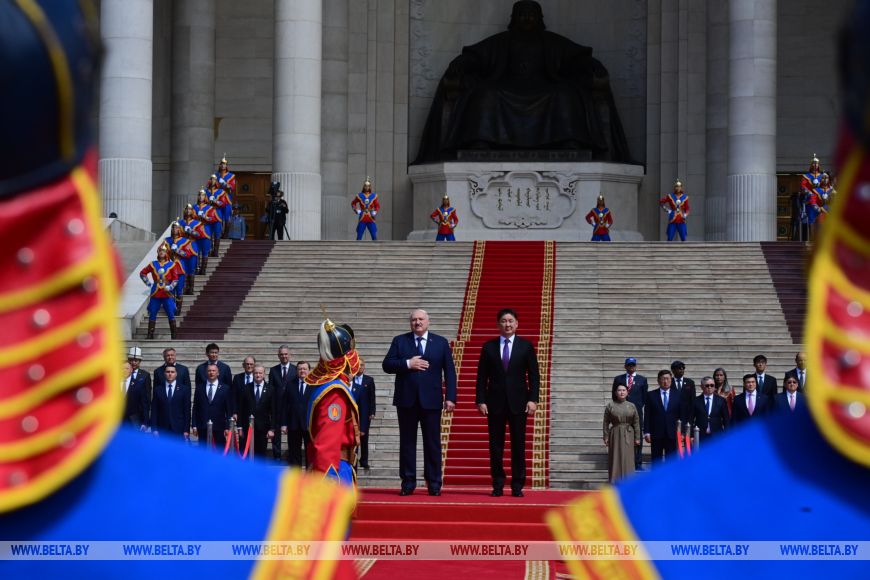 “This visit has
historical significance, as it opens up a new chapter in our friendly and close
relations and seeks to strengthen the partnership between our countries,”
Mongolian President Ukhnaagiin Khurelsukh said during the talks.
“This visit has
historical significance, as it opens up a new chapter in our friendly and close
relations and seeks to strengthen the partnership between our countries,”
Mongolian President Ukhnaagiin Khurelsukh said during the talks.
In fact, the two countries are similar in many ways. Both are sandwiched between two empires, as the Belarusian leader put it. Belarus is located between Russia and the European Union, while Mongolia has China and Russia as its superpower neighbors. Aleksandr Lukashenko expressed support for Mongolia's foreign policy that represents a delicate balancing act between these superpowers. Moreover, the country has colossal natural resources, and this advantage should be preserved and protected.
“I wholeheartedly wish you to be strong in order to survive and bring prosperity and greatness to Mongolian people who fully deserve it. The great Genghis Khan, who you revere (and rightly so because you have a great history) always taught that in order to achieve something, everyone should do their job. The government should be like a strong fist. You cannot hold power with your fingers spread,” Aleksandr Lukashenko said.
It is noteworthy that Aleksandr Lukashenko and Ukhnaagiin Khurelsukh held their narrow-format meeting in a traditional Mongolian yurt set up in one of the halls of the State Palace. This is a tribute to traditions that are greatly revered in Mongolia.
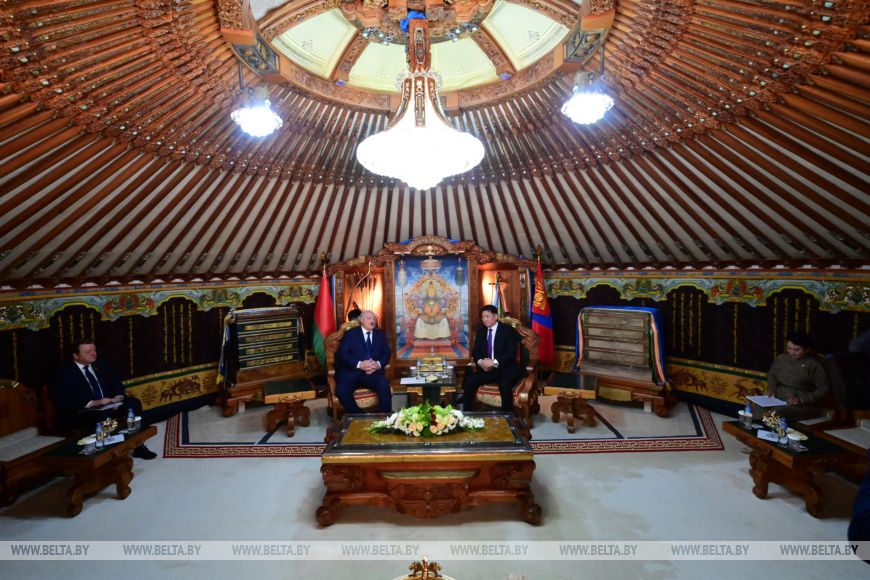 A big Belarusian delegation consisting of government members, heads of enterprises and organizations, as well as business owners arrived in Ulaanbaatar the day before. The delegation was so big that a separate jet had to be arranged for it.
A big Belarusian delegation consisting of government members, heads of enterprises and organizations, as well as business owners arrived in Ulaanbaatar the day before. The delegation was so big that a separate jet had to be arranged for it.
“Cooperation with Mongolia goes way, way back: to the times of the Soviet Union. Sales were good, cooperation was vibrant. For this, the plant was awarded with the Order of the Polar Star in 1985. This is a Mongolian order and we hold it dear. Probably, there are no other holders of this award in Belarus. Still, life goes on. Naturally, in the 1990s sales plummeted. Every year we increase sales figures, looking for new partners. Today we have finally agreed with a company, which is part of the Ministry of Agriculture, on an integrated approach. This suggests that we supply not only a tractor but also the technologies that Belarus has today. This is a plow for a tractor, a planting unit, a seeder and so on,” said Minsk Tractor Works Director General Vitaly Vovk.

Agreements reached during the highest-level talks
The main outcome of the visit was the treaty on friendly relations and cooperation between Belarus and Mongolia signed by the presidents. The highest-level negotiations resulted in 14 cooperation documents in various fields. All in all, about 30 bilateral documents were inked during the visit.
The second most important document was the cooperation roadmap until 2026. It contains more than 50 events and projects across 16 areas of activity.

“We discussed in detail projects and programs that will give more substance to our economic cooperation. They will definitely revitalize our relations, give a boost to economic contacts and become an iconic symbol of bilateral relations,” the Mongolian president said.
In addition to this, about one and a half dozen agreements were concluded during a business forum held in Ulaanbaatar on the sidelines of the state visit. They are estimated at $20 million at the minimum.
At present the trade between Belarus and Mongolia is very small and even miniscule, as Aleksandr Lukashenko characterized it. It was about $30 million in 2023. But the main thing is that the two countries are strongly determined to expand cooperation and have built the necessary contacts to do it.
"We do not have a condition called megalomania. We understand the specifics of our relations and our place in Mongolia's relations with other countries very well. We would like to start with something good, something ambitious, three or four projects to show your people, the country's leadership, journalists and your opposition what we are capable of. No topics will ever be off limits in our relations,” the Belarusian leader said.

However, the package of documents signed during the visit goes far beyond just three or four projects mentioned by Aleksandr Lukashenko. Each of them meets goals and objectives of such national programs of Mongolia as Vision 2050, Food Revolution, Billion Trees and others.
“We are your closest friends and brothers. The president and I will show that we can do a lot in terms of economy. No less than the empires you border with or developed states. I really want this, and we will do it,” Aleksandr Lukashenko emphasized.
The parties agreed on the supply of Belarusian machinery for the mining industry, agricultural machines and equipment, and emergency response vehicles. The parties also look into the possibility of training Mongolian specialists to use this equipment and increasing the number of Mongolian students in Belarus.
“The heads of state discussed the topic of joint entry into the markets of Southeast Asia. We can assemble some equipment here, meet the needs of the Mongolian market and promote our products beyond. Rail cars are in demand in Mongolia. We could consider a possibility of not only supplying them but also assembling them locally,” said Ambassador Extraordinary and Plenipotentiary of Belarus to Mongolia Dmitry Gorelik.
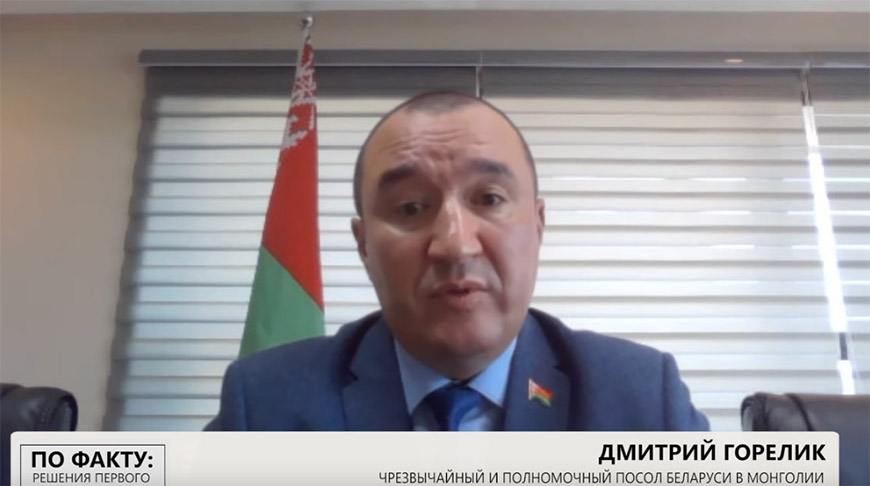
Lukashenko's gift to Mongolian president
The following day after the official talks, Aleksandr Lukashenko and Ukhnaagiin Khurelsukh continued their communication in an informal setting. The Belarusian head of state visited the Mongolian culture center where he got familiar with the traditions and customs of the people of Mongolia. In honor of the president, the center recreated the atmosphere of the Mongolian national festival Naadam. The event featured vocal and choreographic performances and also traditional Mongolian sports.
Ukhnaagiin Khurelsukh gave Aleksandr Lukashenko a pair of Mongolian horses as a gift. Both stallions are red duns. They already got nicknames: Peace and Nimble. Aleksandr Lukashenko did not leave the president of Mongolia without a gift either and gave him two Minsk tractors.

“I really recommend you to learn how to operate it. During my next visit, you will show me how you have learned to drive it,” Aleksandr Lukashenko said.
What prospects does Mongolian market open for Belarus?
Aleksandr Lukashenko's four-day visit to Mongolia had a packed agenda. Skeptics, however, may object: why make such a fuss about relations with Mongolia, a country which is not a priority for us in terms of trade? Despite our long-standing ties, we are still very different. Skeptics say the two nations are unlikely to find common ground. Here, however, comes the most interesting thing. Let us start from the very beginning.
The president's visit to Mongolia was planned in line with Belarus’ strategy to develop relations with faraway countries as part of its export diversification policy. Belarusian-Mongolian cooperation looks promising on that score.
Experts believe that it would be a mistake to perceive our relations with Mongolia as an exclusively bilateral project. The prospects can be much broader here. What are they?
“We need to find growth points together with our strategic partners - the People's Republic of China and the Russian Federation. Today, the trade between Russia and Mongolia is about $2.5 billion; by 2030 it will be $5 billion. Therefore, it seems to me that it is necessary to work not only with Mongolia, but also with Russian investors in this region: Rosatom, KAMAZ, Rostec,” economic analyst, Candidate of Economic Sciences Georgy Grits.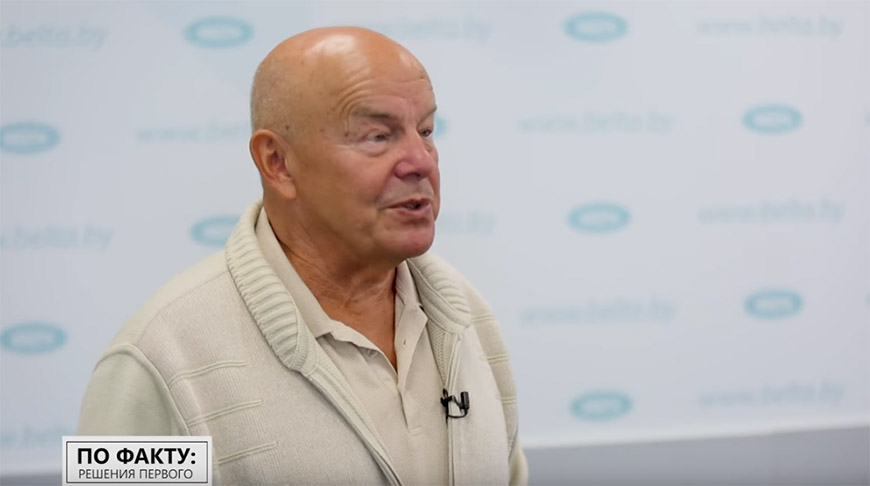
He believes it is worth paying attention to one more thing: “The head of state showed how to work in the markets of friendly countries. He did not gift a painting (although there is nothing wrong with that) but tractors. What are tractors? These are high-tech machines that need to be maintained. In fact, the president laid the framework for future cooperation.”
Analyst of the Belarusian Institute of Strategic Research Anton Dudarenok stressed for his part that Mongolia has increased the volume of domestic cargo transportation by almost 70%. The volume of traffic along the China-Europe route through the Mongolian land port of Erenhot is on the rise as well.
“Belarus did well to reach out to Mongolia today to raise the level of relations with this country: we have the opportunity to join the Russia-Mongolia-China economic corridor and develop joint projects. We could use transport opportunities, the opportunity to participate in joint economic projects and in general in the development of the common Eurasian space,” Anton Dudarenok said. 
Well, the capacity of the Mongolian market is relatively small. Belarus will not be able to saturate the whole country with its products. Therefore, the countries need to look further ahead. First, supplies. Then, joint production, and eventually entering third markets. Why not?
As for the national mindset, Belarusians and Mongols are indeed different ethnic groups. But is this really important in bilateral relations today? Perhaps this is true about the countries that think of themselves as geopolitical leaders and strive for superiority. Belarus, as well as Mongolia, prioritizes mutually respectful, trustworthy and equitable dialogue. This is the basis of any relations, be it economy or politics.
“As with any other countries (no matter which ones: Asian, European, Latin American, African): trade is based on something: on trust, mutual respect, mutually beneficial terms of cooperation. Belarusians have the appropriate competencies in technology, in science. We can and we must work with Mongolia. Just as we work with other countries, taking into account the local mentality. Trade is trade. Humanitarian cooperation is humanitarian cooperation. Political interaction is political interaction. I don't think there are any reservations connected with the distance, a bit different backgrounds. On the contrary, we can complement each other,” Dmitry Gorelik said.
What is the key point of Lukashenko’s visit to Mongolia?
One last thing. They say that the East is a delicate matter. Eastern countries often put interpersonal relations at the center. China, Azerbaijan and Uzbekistan can be cited as prime examples here. Close communication between Aleksandr Lukashenko and the leaders of these states is the driver of bilateral cooperation.
Perhaps that is why the Belarusian leader's visit to Mongolia mostly comprised informal events. Behind official statements and laconic messages, it is important to see the key thing: Belarus and Mongolia are ready to develop very close relations and expand this philosophy to other regions.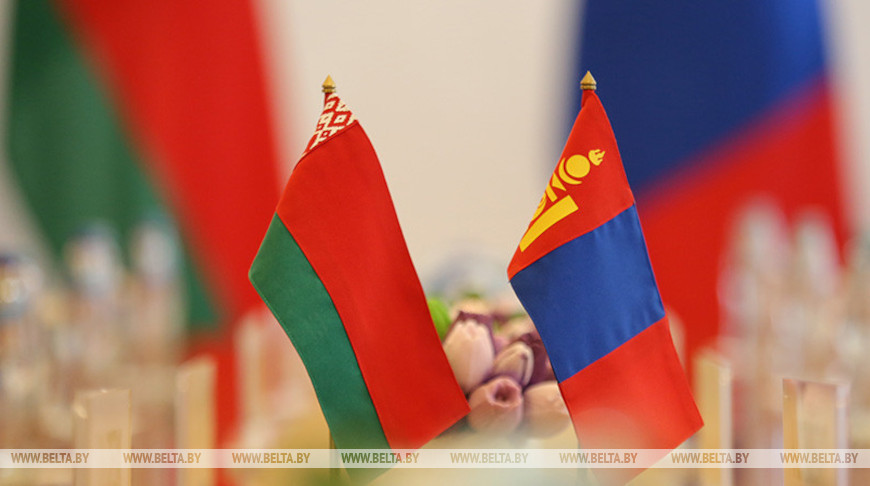
“We did not come here for financial gains. Our trade is about $30 million. Yesterday we discussed this issue with the president. We want to increase it. But not just for our benefit. Our country has been a high-tech hub since the times of the Soviet Union. If Mongolia is interested in our technologies (and we can take on any project), we stand ready to compete on a fair basis with any neighboring state. We did not come to reap profits. We want to restore our relations, which have always been friendly and even fraternal. This is the mission of our visit!” Aleksandr Lukashenko outlined the priorities.





